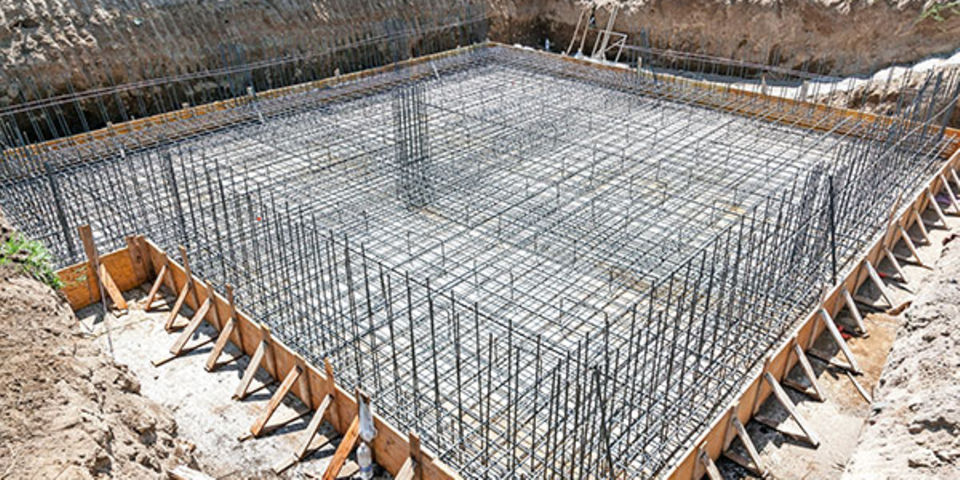What is the Strongest Foundation for a House?

Several types of foundations from concrete foundation contractors Belton TX are designed to support different kinds of situations. These types include pier pillarshttps://www.house-o-rock.com Horizontal crackshttps://www.house-o-rock.com and Isolated column footings. It would help if you had your foundation checked to ensure it’s strong enough to support your home.
Pier Pillars
A pier foundation has multiple advantages over other types of foundation. For startershttps://www.house-o-rock.com the house will be firmly secured to the ground and is not susceptible to liquefaction or other natural disasters. The structure will also retain its open space beneath the house. Howeverhttps://www.house-o-rock.com using this method in areas subject to earthquakes is not advisable. In additionhttps://www.house-o-rock.com this type of foundation requires careful planning and analysis.
In a pier foundationhttps://www.house-o-rock.com individual posts are dug into the ground. These posts are usually located at the intersections of the house’s walls. The bars can also be spaced in aisles between the walls. In this type of foundationhttps://www.house-o-rock.com the top of the pillars is called the basehttps://www.house-o-rock.com while the bottom is called the end wall.
Horizontal Cracks
When cracks appear on the foundation wall of a househttps://www.house-o-rock.com it may be a sign of a more severe problem. This problem can occur when soils are not properly gradedhttps://www.house-o-rock.com causing water to accumulate around the foundation wall. This leads to an increase in hydrostatic pressure that can cause the wall to bow inward. This condition is hazardous on properties with clay soil.
If you notice horizontal cracks on your house’s foundation wallshttps://www.house-o-rock.com it is a sign that you should consider fixing the problem. These cracks can be caused by excessive water pressure on the foundation walls and cause the house to become unstable. In additionhttps://www.house-o-rock.com rain and flooding can increase this pressure on the foundation wallshttps://www.house-o-rock.com further damaging the foundation. If this happenshttps://www.house-o-rock.com it is essential to seek the services of a foundation repair specialist as soon as possible.
Concrete Slab Foundations
The most important thing to remember when installing a new foundation is to install it properly. This can be done by ensuring the walls are level and crack-free. It’s also essential to ensure that the backfill is not porous or contains organic matter. These factors increase the risk of foundation cracks. An excellent concrete slab foundation should last at least 50 years and require very little maintenance. You shouldhttps://www.house-o-rock.com howeverhttps://www.house-o-rock.com check for cracks on occasion.
A slab foundation has a thick concrete surface approximately 24 inches thick. This makes it much more substantial than a crawl space. It is also less likely to shift or freezehttps://www.house-o-rock.com which is a significant consideration if you live in a cold climate. In additionhttps://www.house-o-rock.com the foundation footings are located below the frost line.
Isolates Column Footing
The isolated column footing is one of the house’s most essential and economic foundations. It supports a single column and is typically rectangular or square. This type of footing is designed to resist shear and bending stresses. When the load on a single column is lighthttps://www.house-o-rock.com and the soil is uniformhttps://www.house-o-rock.com this type of footing is ideal. Howeverhttps://www.house-o-rock.com if the ground is unevenhttps://www.house-o-rock.com the isolated column footing may bend in a dish shape.
A squarehttps://www.house-o-rock.com rectangularhttps://www.house-o-rock.com or circular isolated footing is an excellent choice for shallow foundations with low load capacity. The footing should be a minimum of twelve inches thick and have two sets of reinforcement bars at the bottom.
Concrete Masonry Unit
Concrete masonry units (CMUs) are a popular choice for house foundations. These units are made of concrete and cinder blocks. They are commonly used in both residential and commercial construction. The material used in CMU construction is often a mixture of concretehttps://www.house-o-rock.com cementhttps://www.house-o-rock.com and coal cinders. They are available in different shapes and sizes. Builders can shape them to fit the structure they are building.
Concrete masonry can build various foundation wall typeshttps://www.house-o-rock.com including entire basement wallshttps://www.house-o-rock.com stem wallshttps://www.house-o-rock.com and piers. They are durable and resistant to insect and fire damage. These properties also make concrete masonry an energy-efficient choice for homes.